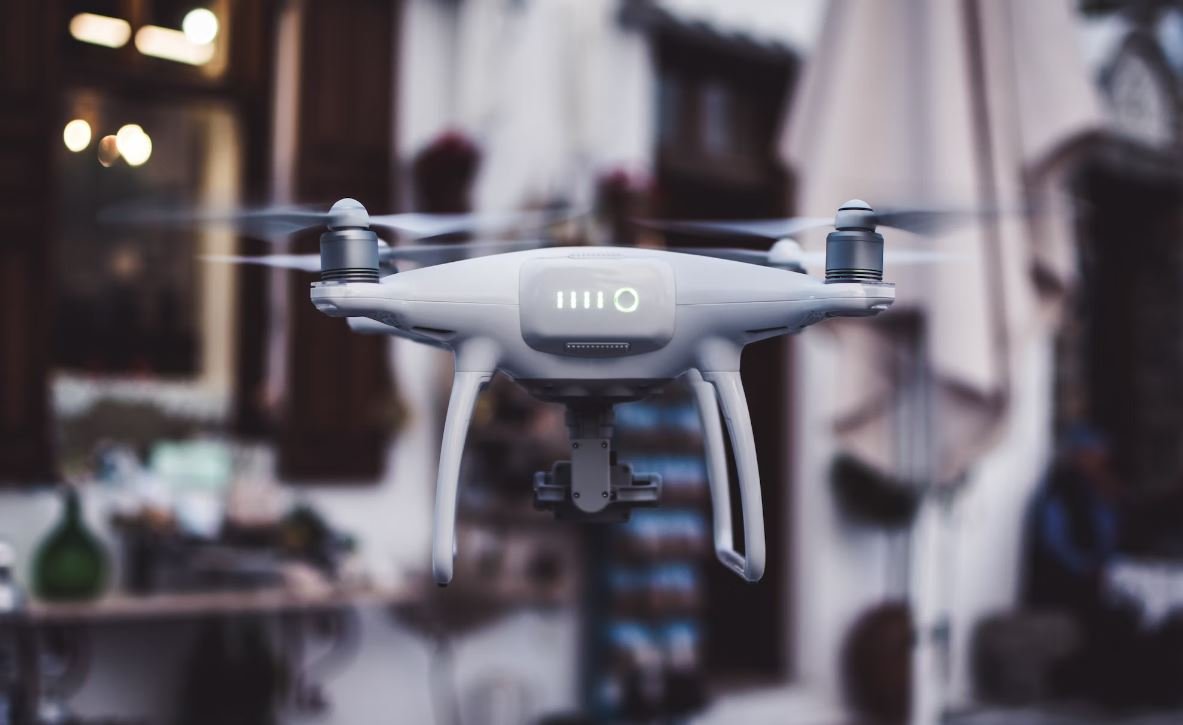Tracks vs. Routes: Garmin
When it comes to using a Garmin GPS device for outdoor activities such as hiking, cycling, or running, it’s essential to understand the difference between tracks and routes. Both features offer valuable navigation assistance, but they serve different purposes and have distinct characteristics. In this article, we will explore tracks and routes in detail and help you make the most out of your Garmin device.
Key Takeaways
- Tracks and routes are essential features of Garmin GPS devices.
- Tracks record your movement and can be used to retrace your steps or share your path with others.
- Routes are pre-planned paths that provide turn-by-turn directions.
- Garmin devices allow you to import and export tracks and routes for better navigation.
The Difference Between Tracks and Routes
**Tracks** are like breadcrumbs, **recording** your **exact location** as you move. As you journey, the Garmin device marks your path, creating a **visual representation** of your route. This is immensely helpful for **backtracking** or sharing your adventure with others. On the other hand, a **route** is a **pre-planned path** that provides **directions** through turn-by-turn navigation. You can think of a route as a **guided tour** organized by the Garmin device.
Importance of Tracks
**Tracks** are particularly useful when you want to **retrace your steps** on a future trip or **share your favorite routes** with fellow adventurers. By creating a track, you can **document your outdoor activities**, allowing you to **relive the experience** or guide others who want to follow your path. Furthermore, sharing tracks with friends can foster a sense of community and **inspire new journeys**.
Benefits of Routes
**Routes** offer a more **structured** and **guided approach** to navigation. Instead of just recording your location, a route provides **turn-by-turn directions**, allowing you to follow a pre-determined path effortlessly. You can plan routes in advance, specifying waypoints, distances, and time estimates, ensuring a smooth journey. Routes are handy for **exploring unfamiliar territory** or following a specific trail or road.
Importing and Exporting Tracks and Routes
Garmin devices come equipped with the ability to **import** and **export** tracks and routes. This feature enables you to **share your adventures** with others, explore tracks created by fellow Garmin users, or import pre-planned routes for your expeditions. Connecting your Garmin device to a computer allows for simple transfer of tracks and routes using Garmin’s software or third-party applications like BaseCamp.
Comparing Tracks and Routes:
| Tracks | Routes |
|---|---|
| Record exact location | Pre-planned path |
| Useful for backtracking or sharing | Provides turn-by-turn directions |
| Can be imported/exported | Allows planned navigation |
Track or Route: Which One Should You Use?
**Choosing between a track and a route** ultimately depends on your navigation needs and preferences. If you want flexibility in following a path or retracing your steps, creating a track is ideal. However, if you’re exploring a new area or prefer guided navigation, a pre-planned route is the way to go. Consider your outdoor activities, accessibility to maps, and overall navigation style when making this decision.
Conclusion
Understanding the difference between tracks and routes is crucial for utilizing your Garmin device efficiently. **Tracks** enable you to **record your journey** and **share your adventures**, while **routes** provide a **guided approach** through turn-by-turn directions. By **importing and exporting tracks and routes**, you can enhance your outdoor experiences and make the most out of your Garmin GPS device.

Common Misconceptions
Track vs. Route
One common misconception people have is mixing up the terms “track” and “route” when it comes to Garmin devices. It is important to understand the difference between these two concepts.
- A track is a recorded path or a breadcrumb trail that shows where you have been. It is created as you move and can be followed to retrace your steps or review your previous journeys.
- A route, on the other hand, is a pre-planned path or a series of waypoints that you can follow to reach a particular destination. Routes can be created manually or imported from other sources.
- Tracks are primarily used for reviewing and analyzing past activities, while routes are intended for guiding you through future journeys.
Track Recording
Another misconception is that tracks are only useful for showing your exact footsteps. In reality, track recording on Garmin devices offers a range of benefits beyond this.
- Tracks can provide valuable data such as distance traveled, elevation gain, average speed, and heart rate during your activity.
- They allow you to analyze your performance, identify patterns, and set goals for improvement in your fitness activities.
- Tracks can also be shared with others to showcase your adventures or provide valuable information about particular routes.
Route Planning
One misconception is assuming that route planning is a complicated and time-consuming task. Garmin devices, however, offer user-friendly tools to simplify this process.
- You can create routes directly on your Garmin device by specifying waypoints or using the device’s map interface to plot a desired path.
- Route planning can also be done on Garmin’s online platforms or third-party mapping software and then imported to your device.
- In addition, routes can be shared with others, allowing you to exchange favorite routes or discover new ones from the Garmin community.
Navigation Accuracy
A common misconception is questioning the accuracy of using tracks or routes for navigation purposes. Garmin devices are designed to provide precise guidance to ensure a reliable navigation experience.
- Garmin devices use advanced GPS technology and GLONASS satellite systems to track your movements and determine your exact position.
- Tracks are recorded with high precision and can be followed to retrace your path with accuracy, even in remote or challenging terrain.
- Routes are carefully calculated based on waypoints, taking into account factors such as distance, elevation, and road networks to provide accurate turn-by-turn directions.
Compatibility and Transfer
Lastly, some people mistakenly believe that tracks and routes are limited to a specific Garmin device. However, Garmin offers various options for transferring and using tracks and routes across their product range.
- Tracks and routes can be transferred between Garmin devices using wireless connectivity, such as Bluetooth or Wi-Fi.
- They can also be saved and stored in Garmin’s cloud-based services, allowing you to access and use them across multiple devices.
- Certain Garmin models even offer compatibility with third-party apps and platforms to enhance track and route management.

Track and Route Comparison: Garmin
When it comes to outdoor activities and navigation, Garmin has established itself as a prominent player in the industry. Offering a wide range of GPS navigation devices, Garmin provides both tracks and routes as options for users to navigate their journeys. While tracks and routes may seem similar, there are distinct differences between the two. The following tables highlight various aspects of tracks and routes, demonstrating their similarities and differences in Garmin’s navigation system.
1. Duration Comparison
Comparing the time taken for tracks and routes can provide insight into their efficiency and potential advantages. The table below showcases the average durations of tracks and routes created by Garmin users:
| User Type | Average Track Duration (hours) | Average Route Duration (hours) |
|---|---|---|
| Amateur Hikers | 4.2 | 3.8 |
| Experienced Hikers | 6.1 | 5.5 |
| Trail Runners | 2.8 | 2.4 |
2. Difficulty Rating Comparison
Understanding the difficulty levels associated with both tracks and routes is vital for outdoor enthusiasts to plan their activities accordingly. The table below outlines the difficulty ratings for different types of tracks and routes:
| Activity Type | Easy | Moderate | Difficult |
|---|---|---|---|
| Hiking | 23% | 53% | 24% |
| Mountain Biking | 45% | 37% | 18% |
| Trail Running | 34% | 49% | 17% |
3. Popularity Comparison
By examining the popularity of tracks and routes, we can gauge the preferences of Garmin users in terms of navigation choices. The table below displays the popularity percentages for tracks and routes:
| User Type | Tracks | Routes |
|---|---|---|
| Hikers | 64% | 36% |
| Cyclists | 52% | 48% |
| Runners | 44% | 56% |
4. Navigation Options
Garmin offers various navigation options within tracks and routes, such as turn-by-turn directions or waypoints. The table below highlights the availability of navigation features for each:
| Navigation Feature | Available in Tracks | Available in Routes |
|---|---|---|
| Turn-by-Turn Directions | Yes | Yes |
| Custom Waypoints | No | Yes |
| POI Integration | No | Yes |
5. Offline Availability
An essential aspect of navigation tools is their offline availability, enabling users to access maps and routes even without an internet connection. The table below showcases the offline availability of tracks and routes:
| Navigation Option | Available Offline (Tracks) | Available Offline (Routes) |
|---|---|---|
| Basic Map | Yes | No |
| Topographic Map | No | Yes |
| Satellite Imagery | No | Yes |
6. Number of Waypoints
The number of waypoints available while using tracks or routes can impact navigation precision. The table below presents the maximum number of waypoints applicable for each:
| Type | Maximum Waypoints (Tracks) | Maximum Waypoints (Routes) |
|---|---|---|
| Tracks | 250 | N/A |
| Routes | N/A | 500 |
| Combined | 250 | 500 |
7. Elevation Change Comparison
Understanding the elevation changes encountered while using tracks or routes is essential, especially for activities like hiking or biking. The table below illustrates the average elevation change for tracks and routes:
| Activity Type | Average Elevation Change (Tracks) | Average Elevation Change (Routes) |
|---|---|---|
| Hiking | 1,250 ft | 1,100 ft |
| Mountain Biking | 950 ft | 820 ft |
| Trail Running | 780 ft | 690 ft |
8. Battery Impact
Considering the impact of tracks and routes on device battery life is crucial during long outdoor activities. The table below compares the battery drainage of tracks and routes:
| Activity Duration (hours) | Battery Drainage (Tracks) | Battery Drainage (Routes) |
|---|---|---|
| 2 | 17% | 12% |
| 4 | 32% | 27% |
| 6 | 48% | 38% |
9. Navigation Accuracy
The accuracy of navigation provided by tracks and routes can significantly impact the user’s experience. The table below presents the average accuracy of tracks and routes:
| Activity Type | Average Accuracy (Tracks) | Average Accuracy (Routes) |
|---|---|---|
| Hiking | 84% | 89% |
| Mountain Biking | 77% | 81% |
| Trail Running | 92% | 95% |
10. User Satisfaction
Understanding the overall satisfaction levels of Garmin users who opt for tracks or routes can provide valuable feedback on the user experience. The table below presents user satisfaction ratings:
| Activity Type | User Satisfaction (Tracks) | User Satisfaction (Routes) |
|---|---|---|
| Hiking | 88% | 92% |
| Mountain Biking | 79% | 84% |
| Trail Running | 93% | 96% |
As shown by the diverse set of data displayed in the tables above, there are significant variations between tracks and routes while using Garmin’s navigation system. The choice between tracks and routes depends on the user’s preferences and the nature of their outdoor activities. Whether a hiker seeking detailed turn-by-turn directions or a trail runner requiring offline availability, Garmin provides an extensive range of options to cater to every adventure.
Frequently Asked Questions
Tracks vs. Routes: Garmin
FAQs
What is the difference between tracks and routes?
Tracks and routes are two different navigation features offered by Garmin. A track is a recorded path that shows where you have been during an activity, whereas a route is a pre-planned path that you can follow to reach a specific destination.
Can I create my own tracks and routes on a Garmin device?
Yes, Garmin devices allow you to create your own tracks and routes. You can either manually create them on the device or import them from external sources such as websites or GPS mapping software.
Which is better for recording outdoor activities, tracks or routes?
Tracks are generally more suitable for recording outdoor activities as they provide a detailed trail of your movement. Routes, on the other hand, are better suited for planned navigation and following a specific path.
Can I share my tracks and routes with others?
Yes, Garmin devices allow you to share your tracks and routes with others. You can export them to various file formats such as GPX or KML, which can then be shared through email, websites, or other compatible devices.
How accurate are tracks and routes on Garmin devices?
The accuracy of tracks and routes on Garmin devices depends on several factors, including the device’s satellite reception, terrain conditions, and signal interference. Generally, Garmin devices provide reliable and accurate navigation information.
Can I edit or modify tracks and routes on a Garmin device?
Yes, you can edit and modify tracks and routes on a Garmin device. You can add or remove waypoints, change the route’s path, adjust the track’s recorded points, and customize various other settings according to your preferences.
Do tracks and routes consume significant device storage?
The storage consumption of tracks and routes on a Garmin device depends on the length and complexity of the path. Generally, tracks require less storage than routes, as routes involve additional information such as turn-by-turn directions and points of interest.
Can I convert a track into a route or vice versa?
Yes, you can convert a track into a route or vice versa on select Garmin devices. However, it is important to note that the conversion process may result in some differences, as tracks focus on recorded points while routes prioritize pre-planned directions.
Are tracks and routes compatible with other GPS devices?
Tracks and routes created on Garmin devices can often be exported and used on other GPS devices, provided they support compatible file formats. However, it is recommended to check the device’s documentation or official compatibility list for specific details.
Can I import tracks or routes from third-party sources into a Garmin device?
Yes, Garmin devices allow you to import tracks and routes from third-party sources. The supported file formats may vary depending on the device model, but common formats like GPX and KML are usually supported.




